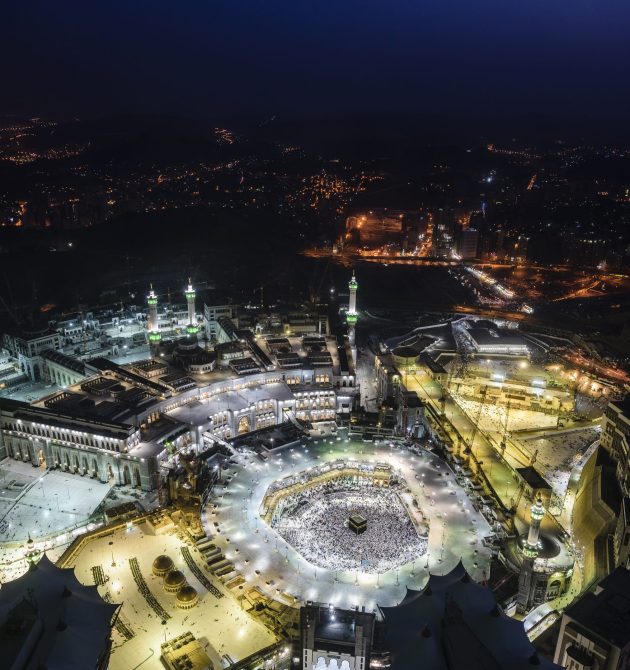Beyond the Haram: 10 Historical Places Your Umrah Package Should Include

When most people look at Umrah packages, they focus on nights in Makkah and Madinah, hotel distance from the Haram, and flight timings. All of that is important. But if your heart is craving a deeper connection to the Seerah and the early Muslims, there’s something else you should pay attention to:
Which historical places are included beyond the Haram itself?
Visiting key sites around Makkah and Madinah – with proper guidance and adab – can turn your journey from a “short pilgrimage” into a living classroom of iman. The problem is, many itineraries either skip these places altogether, or rush through them as if they’re just photo stops.
This guide will walk you through 10 historical places your Umrah package should (ideally) include, plus how to visit them in a way that actually benefits your heart, not just your camera roll.
1. Jabal al-Nour and the Cave of Hira
This mountain in Makkah is where the Prophet ﷺ would go for solitude and reflection – and where revelation first descended via Jibreel عليه السلام.
Why it matters for you:
- It reminds you that change begins with private worship and reflection.
- You see physically how much the Prophet ﷺ strove in seeking closeness to Allah.
What to look for in your package:
- A guide who explains the story of the first revelation clearly.
- A realistic plan: not everyone can climb; some may simply view the mountain from below and reflect.
Problem solved: Instead of treating Hira as a “difficult hike” or just skipping it, a good package helps you draw lessons about contemplation, sincerity, and the value of being alone with Allah.
2. Jabal Thawr
This is the cave where the Prophet ﷺ and Abu Bakr رضي الله عنه hid during the Hijrah from Makkah to Madinah.
Spiritual lessons:
- Absolute trust in Allah even when danger is at the door.
- The famous moment when Allah’s protection is described in the Qur’an.
What your package should do:
- Explain the hijrah story in context: fear, planning, reliance on Allah.
- Remind you that protection comes from Allah, even when means look weak.
Problem solved: Many pilgrims know bits of the Hijrah story but never feel its reality. Seeing Jabal Thawr with proper explanation makes tawakkul feel more real and personal.
3. Mina, Muzdalifah and ‘Arafat (Where Possible)
Although these locations are central to Hajj, visiting them during Umrah (if access and time allow) can deepen understanding of both journeys.
Why they’re valuable:
- Mina: sacrifice and obedience.
- Muzdalifah: humility and simplicity.
- ‘Arafat: the greatest day of dua and forgiveness.
What a thoughtful Umrah package offers:
- A drive-through visit with a guide explaining how Hajj works and why these places matter.
- Reflection on how you can prepare for Hajj in the future, or at least adopt the spirit of repentance and renewal in Umrah.
Problem solved: Instead of seeing Hajj as a mysterious “one day maybe” ritual, you gain clarity and motivation by understanding its physical context now.
4. Jannat al-Mu‘alla (Makkah Cemetery)
This is a historic cemetery in Makkah where close relatives of the Prophet ﷺ and early Muslims are buried.
Spiritual benefits:
- A strong reminder of death, the shortness of life, and the reality of the akhira.
- Encourages dua for the deceased and reflection on your own legacy.
Your package should:
- Emphasise adab: no strange practices, no calling on the dead.
- Encourage simple, sunnah-compliant dua for those buried, not to them.
Problem solved: Instead of copying whatever others do at graves, you learn how to benefit from such visits in a way that’s correct and spiritually grounding.
5. Mount Uhud (Madinah)
Uhud is one of the most powerful places to visit near Madinah. It’s where a pivotal battle took place, and where many beloved companions were martyred.
Key lessons:
- Obedience vs. disobedience and its consequences.
- Love for the Prophet ﷺ and readiness to sacrifice for him.
- The humanity of the Ummah: mistakes, forgiveness, and moving forward.
What a strong Umrah package includes:
- A detailed explanation of what happened at Uhud, not just “here is the mountain, take photos.”
- Guidance on making dua for the martyrs and reflecting on your own commitment to Islam.
Problem solved: Many people “visit Uhud” but leave without understanding what actually happened. A proper visit turns Uhud into a mirror for your own discipline and loyalty.
6. Masjid Quba
Masjid Quba is the first mosque built in Islam, loved and frequently visited by the Prophet ﷺ.
Why it’s special:
- The Prophet ﷺ would visit it regularly.
- Praying there is highly virtuous according to authentic narrations.
What to expect from your package:
- Time to pray there calmly, not just a rushed stop.
- A brief reminder about the virtues of the masjid and the early days in Madinah.
Problem solved: Instead of ticking it off the list, you actually have the chance to pray with focus and appreciate its historical and spiritual value.
7. Masjid al-Qiblatain
This mosque marks the place where the qiblah was changed from Jerusalem (Bayt al-Maqdis) to the Ka‘bah.
Deep meanings:
- Obedience and submission to Allah’s command even when it changes.
- The unity of direction for the Muslim Ummah.
What good Umrah packages do:
- Explain the story of the qiblah change.
- Connect it to obeying Allah even when it means adjusting your habits or preferences.
Problem solved: Instead of seeing this as a random “extra mosque,” you come away with a deeper understanding of how quickly the Sahabah responded to Allah.
8. The Area of the Trench (Khandaq) and the “Seven Mosques” Area
This region is linked to the Battle of the Trench, when the Muslims defended Madinah against a huge coalition.
Lessons from Khandaq:
- Strategic planning and consultation.
- Patience under siege and hardship.
- Firmness in the face of fear.
What your package should provide:
- Context: why the trench was dug, who participated, and how Allah granted victory.
- Reflection: how you can respond to pressure and fear as a believer today.
Problem solved: You move beyond vague knowledge of “some battle” and gain a living appreciation of courage and trust in Allah.
9. Baqi’ (Jannat al-Baqi’ in Madinah)
This is the main cemetery of Madinah where many companions and family members of the Prophet ﷺ are buried.
Why visiting (from outside) is impactful:
- It’s a powerful reminder of the great people who walked this earth and returned to Allah.
- It humbles you and helps you think about your own final destination.
A responsible Umrah package will:
- Emphasise sunnah manners at cemeteries.
- Explain who is buried there (as far as known) without turning it into a place of exaggerated practices.
Problem solved: Instead of confusion or imitation of others, you know exactly how to behave and what to say, and you leave with a quieter, more reflective heart.
10. Historical Routes and Surroundings (Where Feasible)
Some cultural Umrah packages also include short drives or explanations of:
- Approximate routes of the Hijrah
- Areas where key events of the Seerah unfolded
- Surroundings of Madinah that show the contrast between then and now
Why this matters:
- You better visualise the journeys and sacrifices made for Islam.
- You appreciate modern comfort while admiring the perseverance of the Prophet ﷺ and the Sahabah.
Problem solved: Seerah stops being a collection of stories on a page and becomes a journey you can picture and feel.
How These 10 Places Make Your Umrah Package Truly Valuable
Including these locations in Umrah packages isn’t about making your itinerary longer; it’s about making your experience deeper.
A good package will:
- Combine ziyarat with teaching, not just sightseeing.
- Keep the focus on ibadah and reflection, not endless shopping and selfies.
- Respect your energy and time so that you still prioritise salah in the Haramain.
When you’re comparing Umrah offers, don’t just ask:
“How many stars is the hotel?”
Also ask:
“Which historical places will we visit, and how will they be explained?”
Because in the end, the best Umrah journey is not the one with the most stops, but the one that leaves your heart most attached to Allah, His Messenger ﷺ, and the message they lived and died for.


